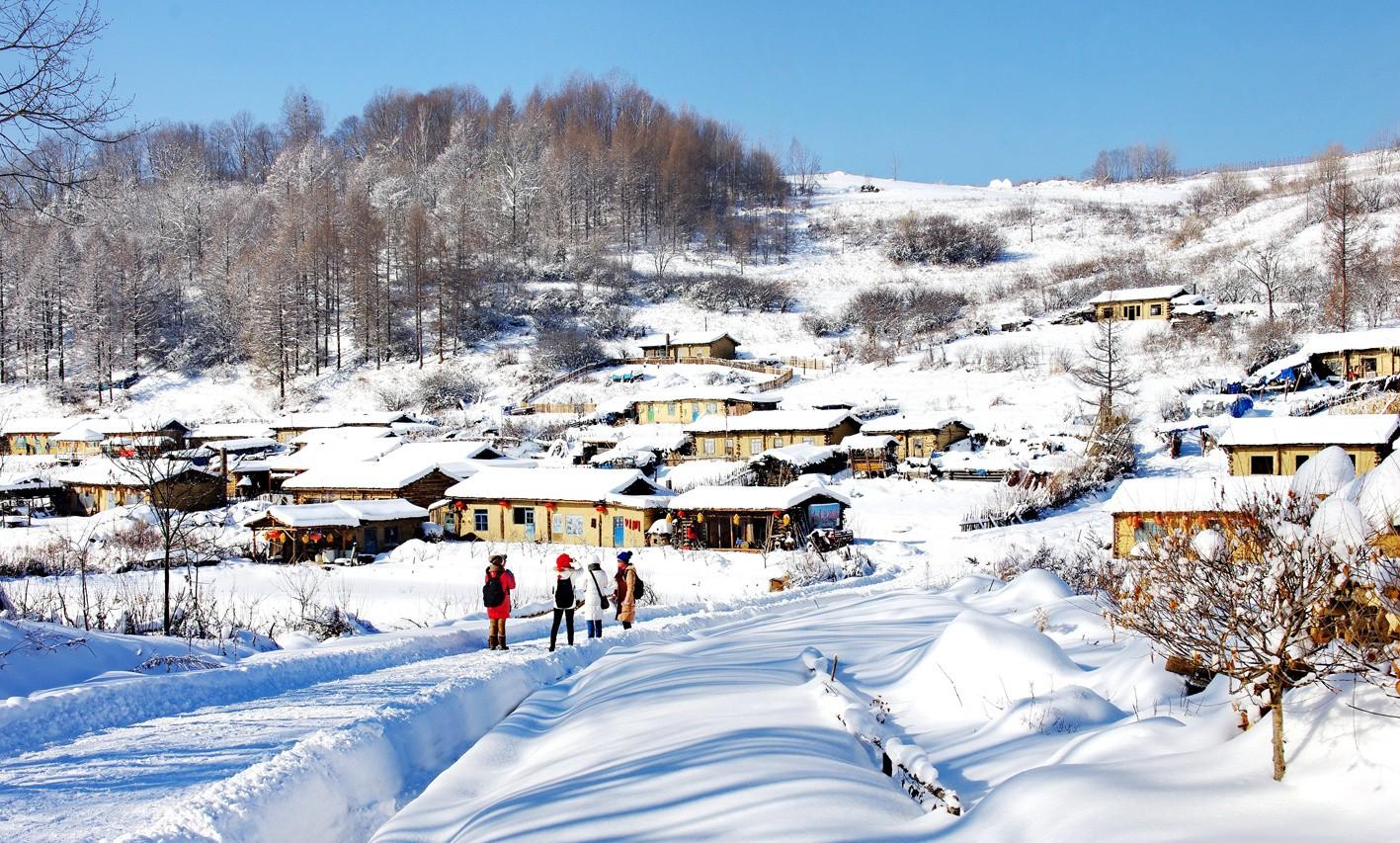As the years passed, wooden walls, wooden tiles... Left a trace of time.
Located in Jinjiang Wooden House Village, Manjiang Town, Fusong County, Baishan City, Jilin Province, the entire village has not seen a single brick or tile, and has existed at the foot of Changbai Mountain for more than 300 years.
Jinjiang Wooden House Village, which preserves the most complete and numerous Manchu ancient wooden house complex, is also known as the "living fossil of Changbai Mountain Wood Culture" and has the reputation of "the last wooden house village in Changbai Mountain".

Snow-capped Jinjiang Wooden House Village
In the spring and summer, it is decorated with mountain flowers and trees, and in the winter, it is covered with snow and ink. More than 50 houses in the small village are staggered by the height of the mountain, black-brown wooden walls, wooden tiles, wooden fences... The snow is outlined by the crystalline snow on a thick white edge, and the background is a forest sea snowfield.
Where did the wooden house village come from? The years have dyed the tiles green and gray, and the story has been circulating.
A corner of the lush wooden village
Today, the people in the village still relish the words handed down by the elders, "We stay here to wait for people." "People can't tell who they're waiting for."
According to legend, in the 16th year of Kangxi (1677), Kangxi sent people to explore the road to worship Changbai Mountain, and when he returned to Beijing at the end of the search for the mountain, he left some soldiers to build villages and camps here, waiting for Kangxi to come and worship his ancestors. Until the death of Kangxi, the sacrifice into the mountain did not take place. Those who remained settled here, multiplied and formed villages.
Because changbai mountain is extremely rich in timber reserves, local residents use local materials to cut down trees and build houses. Most of them use larch with oil and oil from the mountains and anti-corrosion as materials, and the logs are stacked vertically and horizontally to build the walls, and the loess is applied to fill in the gaps.
Well-preserved wooden house Xu Yongwei / Photo
Bricks and tiles are fragile and solid wood is not rotten. Today, the old house is witnessing a new story of development.
At present, despite the impact of the epidemic, the family of Zou Jiyou, a villager in his 60s, has received orders from tourists one after another. Their three wooden houses have long been used as a farm for tourists, and this New Year's Day holiday is still busy.
Snow dancing frozen Fusong County
In recent years, Fusong County has vigorously developed rural tourism, and strived to turn green water, green mountains, ice and snow into golden mountains and silver mountains, and promote rural revitalization. Fusong County has built rural folk customs tourist attractions through the protection, rescue and repair of wooden house villages, excavation of folk customs. In 2009, the village was included in the list of intangible cultural heritage of Jilin Province, and in 2013, it was included in the list of traditional Chinese villages by the Ministry of Housing and Urban-Rural Development.
The wooden house has gained fame, and the villagers have benefited. In the early years, villagers mostly made a living by clearing land, hunting, and fishing. Today, the villagers are on the road to prosperity through tourism.
The village provides a ox pulling a climbing plow for tourists
Zou Jiyou was the first in the county to set up a tourism cooperative and set up a farm. "When there are many people, you have to entertain 200 tables a day." Zou Jiyou, who is now in his 60s, is full of energy. In his opinion, the village is beautiful in all seasons, and the wooden houses are authentic features that tourists from all over the country like.
The annual income of the cooperative is more than 300,000 yuan, which also drives the villagers to increase their income. Zou Jiyou also contracted more than 30 acres of woodland at the edge of the village, planted forest ginseng, and provided tourists with ginseng digging experience services.
In recent years, Fusong has focused on building 10 characteristic towns, 100 boutique farms, and 1,000 tourist inns. The change of the wooden house village has witnessed the development of rural tourism in Fusong County.
The interior of the quaint wooden house has been renovated to meet the needs of tourist accommodation
"We are waiting for a better life in the future." Zou Jiyou hopes to protect the ancient village better, "the old house is the wealth of the villagers."
Snowflakes drift quietly, come to the wooden house village, and listen to a story of time.
Produced by Jilin Daily
Planner: Jiang Zhongxiao
Editor: Han Yuhong